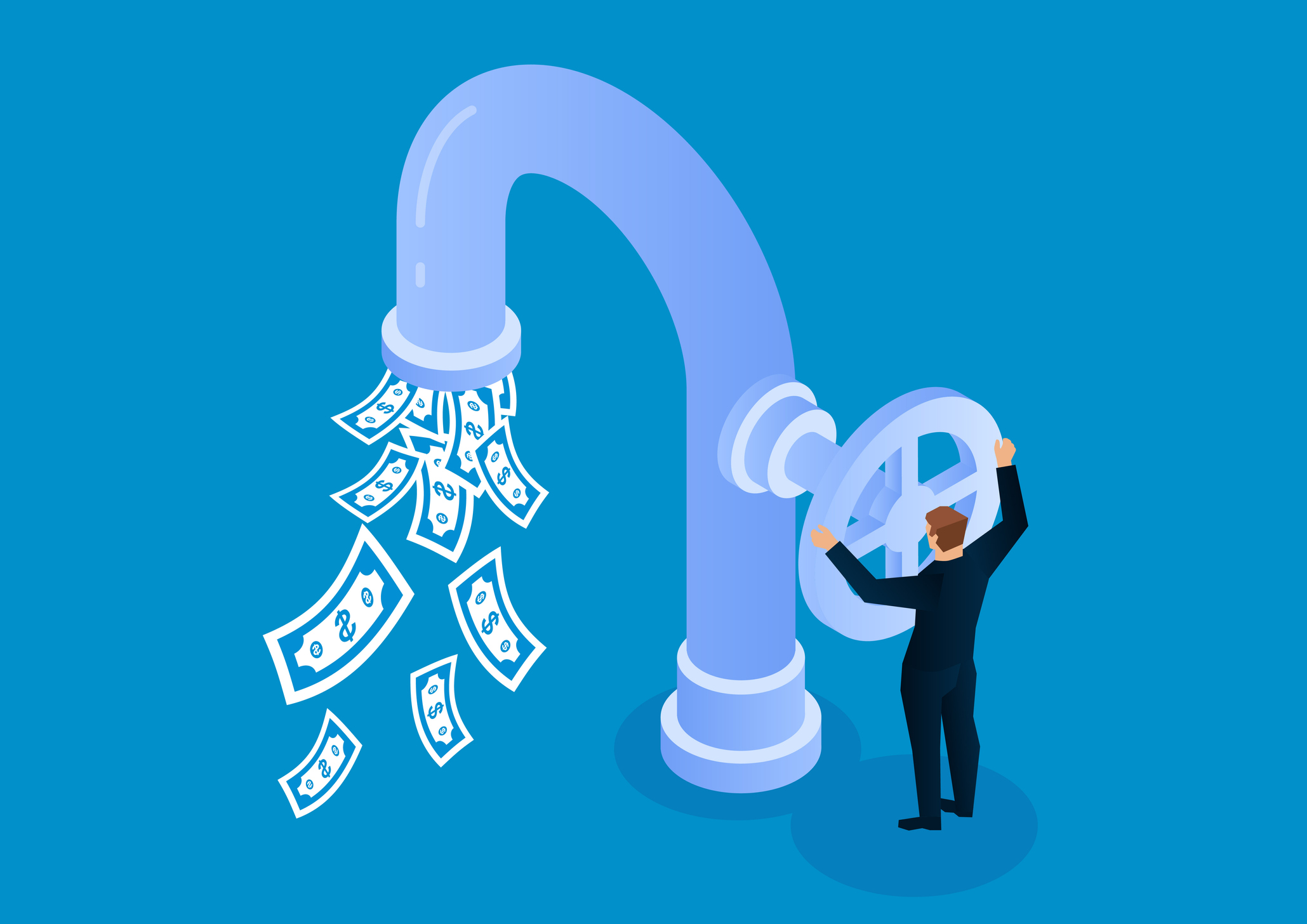5 Best Low-Cost Mutual Funds
In choosing funds, the expense ratio—not performance—is the first number to consider.

With many things, you really do get what you pay for. But not when it comes to investing. Low costs, it turns out, are the single best predictor of success for mutual funds.
Most fund sponsors would rather you consider everything but their funds’ expense ratios. They tout past performance, the brilliance of their fund managers, their experience and a host of other qualities.
But low costs “are the steadiest predictors” that funds will outperform their peers in the future, says Russ Kinnel, director of fund research at Morningstar.

Sign up for Kiplinger’s Free E-Newsletters
Profit and prosper with the best of expert advice on investing, taxes, retirement, personal finance and more - straight to your e-mail.
Profit and prosper with the best of expert advice - straight to your e-mail.
You’ll typically find that index funds—unmanaged products that simply seek to emulate a benchmark—charge the least. Even so, you can find plenty of index funds that bear high fees, and they, too, tend to be poor performers. It’s not about actively managed funds as opposed to passively run funds, Kinnel says. “Low costs are what matter.”
To test this notion, I asked Morningstar to divide all diversified stock and bond funds into two groups: relatively low-cost funds (those that charge 0.75% annually or less) and high-cost funds (those that charge more than 0.75%). I also had Morningstar separate funds into broad groups: domestic stock, foreign stock, taxable bond and tax-free bond funds. Then I looked at their performance over different time periods, ranging from the 12 months to 15 years through August 2014. Over every period and in every category, the average low-cost fund ranked better than the average high-cost fund. For instance, the average low-cost domestic stock fund ranked in the top 39% of its peers over the 10-year period I examined, while the average high-cost fund finished in the top 53% (or in the bottom 47%, if you prefer to look at it that way).
And low-cost funds fared better despite the existence of survivorship bias in the study. Survivorship bias skews the results of performance studies because of the tendency of fund sponsors to close down bad funds, many of which charge high fees.
Morningstar’s Kinnel did a similar study that included funds that went out of business, and he also found superior results for low-cost funds. For instance, in 2008 the 20% of U.S. stock funds with the lowest expense ratios had a 56% chance of surviving and beating their category average over the next five years. As for the 20% of U.S. stock funds with the highest fees, only 34% cleared the same hurdle.
Of course, costs aren’t everything. Risk-adjusted returns (which take into account a fund’s volatility), a fund firm’s corporate culture, the frequency of a fund’s trading and other factors are also important. Below are my five favorite low-cost funds—four actively managed products and one index fund.
Dodge & Cox Stock (DODGX) returned an annualized 8.8% over the past 15 years, beating Standard & Poor’s 500-stock index by an average of 4.3 percentage points per year (]unless otherwise noted, results in this article are through September 12). Moreover, Dodge & Cox Stock landed in the top 2% of funds that hunt for large, undervalued companies. Annual expenses are 0.52%, compared with 1.25% for the average diversified U.S. stock fund. Dodge & Cox Stock is a member of the Kiplinger 25.
Over the years, Fidelity has developed a first-class lineup of bond funds. My favorite is Fidelity Total Bond (FTBFX). It charges 0.45% annually, compared with 1.00% for the average taxable bond fund, and it yields 2.5%. Over the past five years, it returned an annualized 5.7%—an average of 1.5 percentage points per year better than Barclays Aggregate U.S. Bond index. The average credit quality of the fund’s bonds is triple-B. Based on the fund’s average duration (a measure of interest-rate sensitivity), figure that its price would fall by nearly 5% if interest rates were to rise by one percentage point. Total Bond is also a member of the Kiplinger 25.
Primecap Odyssey Stock (POSKX) is the most sedate of the funds offered by Primecap, a terrific Los Angeles-based shop that specializes in growth stocks. Over the past five years, the fund has trailed the S&P 500 by an average of 0.2 percentage point per year. But it has been 7% less volatile than the index, and the fund charges just 0.63% annually. The fund is a younger sibling of Vanguard Primecap (VPMCX), which has beaten the S&P index by an average of 2.6 percentage points per year over the past 10 years but is currently closed to new investors.
Vanguard Dividend Growth (VDIGX) wasn’t built for a stock market that never seems to stumble. But Dividend Growth, another member of the Kip 25, is an ideal fund for a bull market that’s getting long in the tooth. The fund, which holds mostly blue-chip stocks with impeccable records of hiking dividends, has lagged the S&P 500 by an average of 0.8 percentage point per year over the past five years. However, it has been 17% less volatile than the S&P index, and it lost only 42.3% during the 2007-09 bear market, compared with a 55.3% plunge for the index. Expenses are just 0.31% per year.
A list of low-cost funds would not be complete without an index fund, so I also recommend Vanguard Total Stock Market Index Admiral (VTSAX). It charges a mere 0.05% annually for essentially the entire U.S. stock market. The fund tracks the CRSP U.S. Total Stock Market index, which consists of more than 3,600 stocks. With 27% of its assets in stocks of small and midsize companies, Total Stock has far more exposure to smaller companies than funds that track the S&P 500 index. Because of the extra emphasis on small companies, Total Stock bested the S&P 500 by an average of 0.6 percentage point per year over the past 10 years. VTI is the symbol for an identical exchange-traded version of Total Stock.
Steven T. Goldberg is an investment adviser in the Washington, D.C. area.
Get Kiplinger Today newsletter — free
Profit and prosper with the best of Kiplinger's advice on investing, taxes, retirement, personal finance and much more. Delivered daily. Enter your email in the box and click Sign Me Up.

-
 Stock Market Today: Stocks Gain on Tech, Auto Tariff Talk
Stock Market Today: Stocks Gain on Tech, Auto Tariff TalkThe Trump administration said late Friday that it will temporarily halt tariffs on some Chinese tech imports.
By Karee Venema
-
 Sam's Club Plans Aggressive Expansion: Discover Its New Locations
Sam's Club Plans Aggressive Expansion: Discover Its New LocationsSam's Club expansion plans will open up to 15 new stores each year. Learn where they plan to open in 2025.
By Sean Jackson
-
 How Inflation, Deflation and Other 'Flations' Impact Your Stock Portfolio
How Inflation, Deflation and Other 'Flations' Impact Your Stock PortfolioThere are five different types of "flations" that not only impact the economy, but also your investment returns. Here's how to adjust your portfolio for each one.
By Kim Clark
-
 Kiplinger's Economic Calendar for This Week (April 14-April 18)
Kiplinger's Economic Calendar for This Week (April 14-April 18)This week's economic calendar features Fed Chair Jerome Powell as well as retail sales data and an unusually interesting weekly jobless claims update.
By Karee Venema
-
 Why I Still Won't Buy Gold: Glassman
Why I Still Won't Buy Gold: GlassmanOne reason I won't buy gold is because while stocks rise briskly over time – not every month or year, but certainly every decade – gold does not.
By James K. Glassman
-
 Should You Use a 25x4 Portfolio Allocation?
Should You Use a 25x4 Portfolio Allocation?The 25x4 portfolio is supposed to be the new 60/40. Should you bite?
By Nellie S. Huang
-
 Retirement Income Funds to Keep Cash Flowing In Your Golden Years
Retirement Income Funds to Keep Cash Flowing In Your Golden YearsRetirement income funds are aimed to engineer a steady payout of cash for retirees. Here are a few we like.
By Nellie S. Huang
-
 10 2024 Stock Picks From An Investing Expert
10 2024 Stock Picks From An Investing ExpertThese 2024 stock picks have the potential to beat the market over the next 12 months.
By James K. Glassman
-
 Special Dividends Are On The Rise — Here's What to Know About Them
Special Dividends Are On The Rise — Here's What to Know About ThemMore companies are paying out special dividends this year. Here's what that means.
By Kim Clark
-
 How to Invest in AI
How to Invest in AIInvestors wanting to know how to invest in AI should consider these companies that stand to benefit from the boom.
By Kim Clark